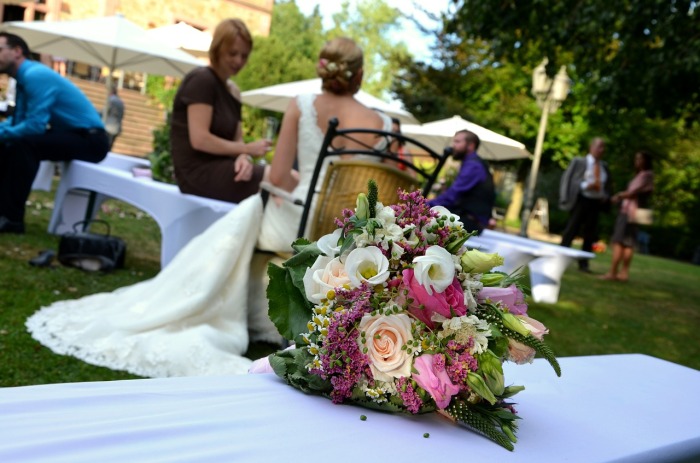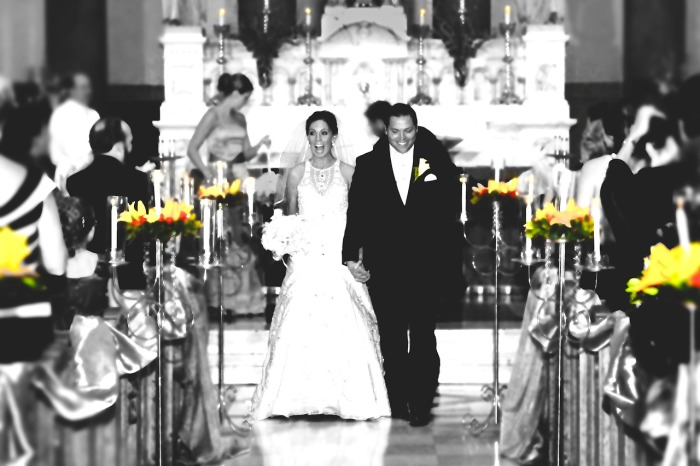A trio of classical musicians performing Jeremiah Clarke’s Trumpet Voluntary
and Pachelbel’s Canon. Both classical pieces of music are performed on the Cello, Flute and Harp. This slide show is an example of music that would be appropriate for a wedding ceremony or the cocktail hour of a wedding reception.

The Order of the Music at a Wedding Ceremony:
Processional refers to the music that is being played as the bridal party enters the church, once all the guests are seated. One piece of music for the bridal party, then another for the bride.
The prelude refers to the music performed prior to the recessional, as the guests are being seated.
The recessional refers to the music at the conclusion of the wedding ceremony. The bride and groom exit first, followed by the bridal party, the parents, and the congregation. Modern couples are changing the rules to suit their needs, the family dynamics and their religion.

About the Trumpet Voluntary:
“The Prince of Denmark’s March” is more commonly known as the Trumpet Voluntary by Jeremiah Clarke.
It is customarily played as the bride enters the church with her father, the processional. “The Prince of Denmark’s March” was composed by Jeremiah Clarke. It is called The Prince of Denmark’s March; but better known as The Trumpet Voluntary. It was composed for the keyboard, probably,around 1700. This music can be heard at a number of royal weddings, most notably at the 1981 wedding of Prince Charles and Lady Diana.
From Wikipedia, the free encyclopedia
Biography:
Jeremiah Clarke (c. 1674 — 1 December 1707) was an English baroque composer and organist.
Thought to have been born in London around 1674, Clarke was a pupil of John Blow at St Paul’s Cathedral. He later became an organist at the Chapel Royal. After his death, he was succeeded in that post by William Croft.
Clarke is best remembered for a popular keyboard piece: the Prince of Denmark’s March, which is commonly called the Trumpet Voluntary, written about 1700. From c. 1878 until the 1940s the work was attributed to Henry Purcell, and was published as Trumpet Voluntary by Henry Purcell in William Sparkes’s Short Pieces for the Organ, Book VII, No. 1 (London, Ashdown and Parry). This version came to the attention of Sir Henry J. Wood, who made two orchestral transcriptions of it, both of which were recorded. The recordings further cemented the erroneous notion that the original piece was by Purcell. Clarke’s piece is a popular choice for wedding music, and has been used in royal weddings. Most notably the wedding of Prince Charles and Lady Diana Spencer in 1981.
The famous Trumpet Tune in D (also incorrectly attributed to Purcell) was taken from the semi-opera The Island Princess, which was a joint musical production of Clarke and Daniel Purcell (Henry Purcell’s younger brother)—probably leading to the confusion.
Pachelbel’s Canon
Pachelbel’s Canon is the name commonly given to a canon by the German Baroque composer Johann Pachelbel in his Canon and Gigue for 3 violins and basso continuo (German: Kanon und Gigue für 3 Violinen mit Generalbaß) sometimes referred to as Canon and Gigue in D or simply Canon in D. It is his most famous composition. It was originally scored for three violins and basso continuo and paired with a gigue. Both movements are in the key of D major.
Like most other works by Pachelbel and other pre-1700 composers, the Canon remained forgotten for centuries and was rediscovered only in the 20th century. Several decades after it was first published in 1919 the piece became extremely popular. The piece’s chordal progression has been appropriated in numerous commercial pop hits, particularly during the 1990s, such as in Pet Shop Boys cover of “Go West”, Coolio’s “C U When U Get There” and Green Day’s “Basket Case”.
This piece was composed by Johann Pachelbel(1653-1706)
Join us on Social Media!
Visit our Website:
http://www.musicnewjersey.com
Like us on Facebook:
https://www.facebook.com/EntertainmentConsultants
Follow us on Twitter:
http://www.twitter.com/#!/MusicNewJersey
Follow our Pinterest Boards:
Credits:
Photography courtesy of Pixabay
Slideshow and blog created by Ana Maria Verrusio
